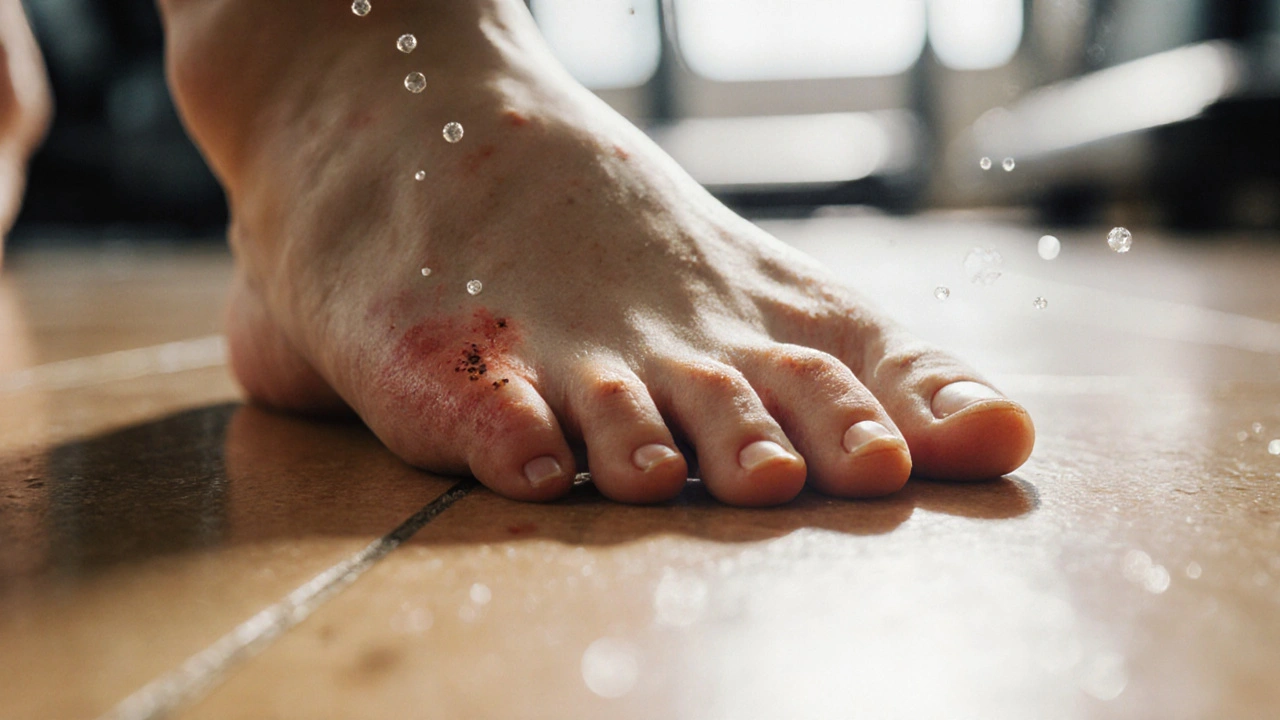Foot Fungus: What It Is and How to Beat It
If you’ve ever had itchy, flaky skin between your toes or a thick yellow nail, you’ve probably dealt with foot fungus. It’s a common problem, but most people don’t know what triggers it, how to treat it, or how to keep it from coming back. This guide walks you through the basics, gives you easy‑to‑follow treatment steps, and shares practical prevention tricks you can start using today.
Common Signs and Types
Foot fungus isn’t a single thing – there are a few related conditions that show up in different ways. The most familiar is athlete’s foot (tinea pedis). You’ll notice red, scaly patches that may burn or itch, especially in the spaces between the toes. Another form is tinea corporis on the foot, which causes round, ring‑shaped lesions. Then there’s fungal nail infection (onychomycosis). This one makes the nail look discolored, thick, and crumbly, and it can spread to other nails if left unchecked.
Key red flags include:
- Itching or burning that gets worse after sweating.
- Peeling skin that looks white or yellow.
- Cracked heels or a foul odor.
- Nails that become thick, brittle, or change color.
Spotting these early helps you treat the infection before it spreads to the rest of the foot or even to your hands.
Practical Ways to Treat and Prevent
Most mild cases respond to over‑the‑counter (OTC) antifungal creams, sprays, or powders. Look for active ingredients like clotrimazole, terbinafine, or miconazole. Apply the product to clean, dry skin twice a day for at least two weeks – even if the symptoms disappear sooner. For nail fungus, topical treatments work less well; a prescription oral antifungal (e.g., terbinafine tablets) may be needed.
Home remedies can boost OTC treatment. Soaking your feet in a mixture of warm water and vinegar (1:4 ratio) for 15 minutes daily helps lower the skin’s pH and slows fungal growth. A tea‑tree oil drop added to the soak adds a natural antifungal punch, but test a small area first to avoid irritation.
Prevention is where most people slip up. Here are habits that make a real difference:
- Keep feet dry. After showering or exercising, towel the spaces between your toes thoroughly.
- Choose breathable footwear. Shoes made of leather or mesh let moisture escape. Rotate shoes so they dry completely between wears.
- Use antifungal powder. Sprinkle it inside shoes and on socks if you sweat a lot.
- Avoid walking barefoot in public places. Locker rooms, pool decks, and communal showers are breeding grounds for fungus.
- Trim nails straight across. Short nails give fungus fewer places to hide.
If you notice the infection isn’t improving after a couple of weeks of OTC treatment, or if the nail looks badly damaged, see a pharmacist or doctor. They can prescribe stronger medication and check for underlying conditions like diabetes that make fungal infections more serious.
Bottom line: foot fungus is annoying but manageable. Spot the signs early, treat with the right product, and lock in prevention habits. Stick to these steps and you’ll keep your feet healthy, comfortable, and fungus‑free.

Athlete's Foot: Causes, Symptoms & Effective Treatments
Learn what causes athlete's foot, how to spot symptoms, and the best treatment options-from OTC creams to prescription meds and prevention tips.
view more